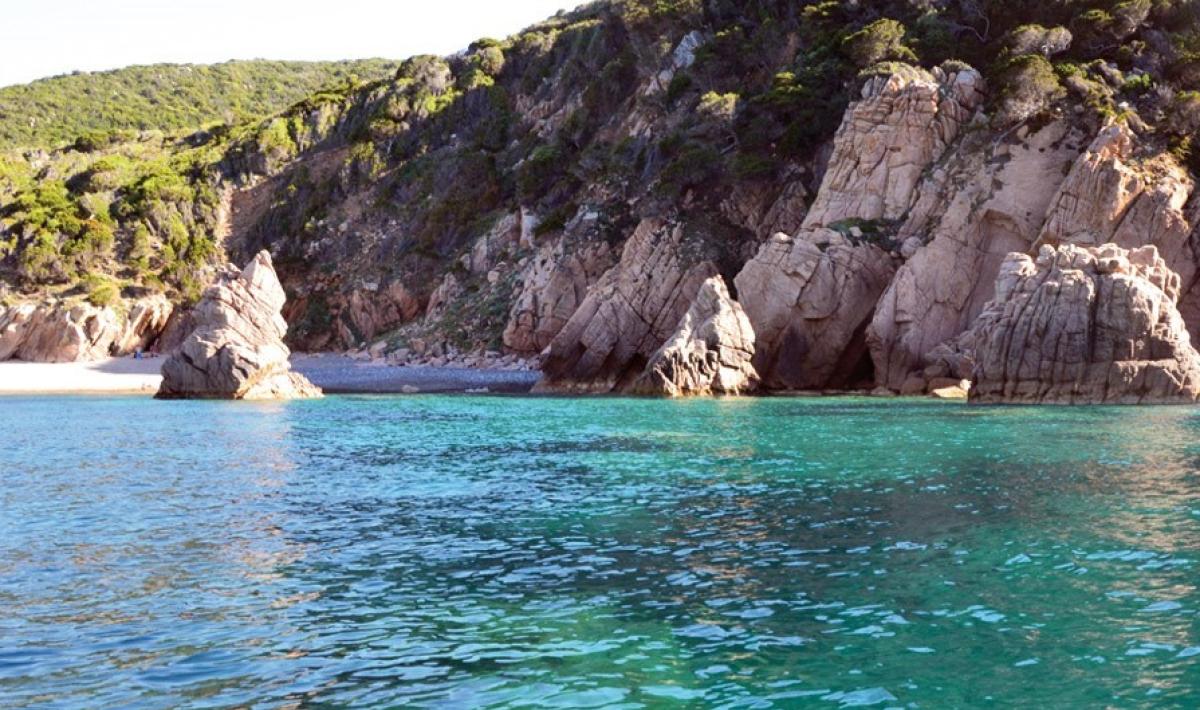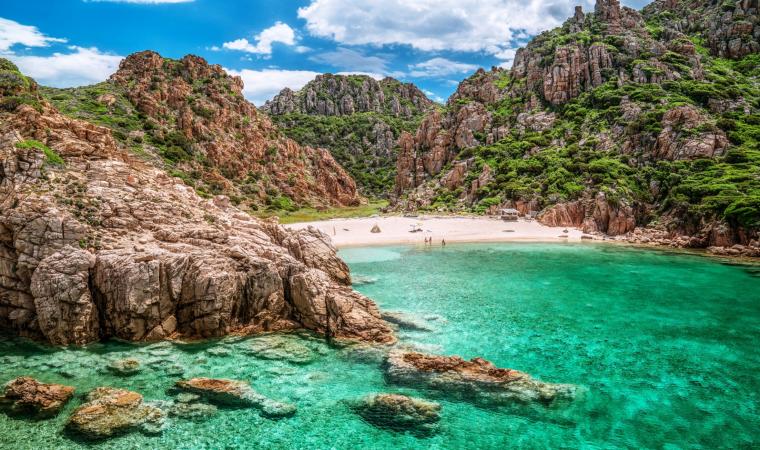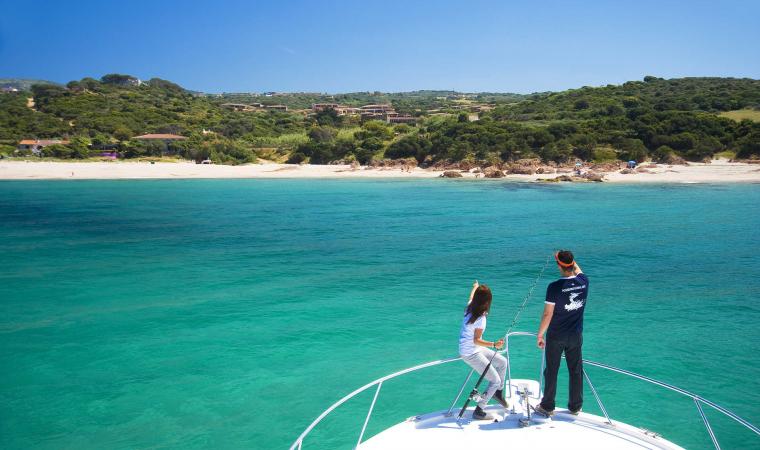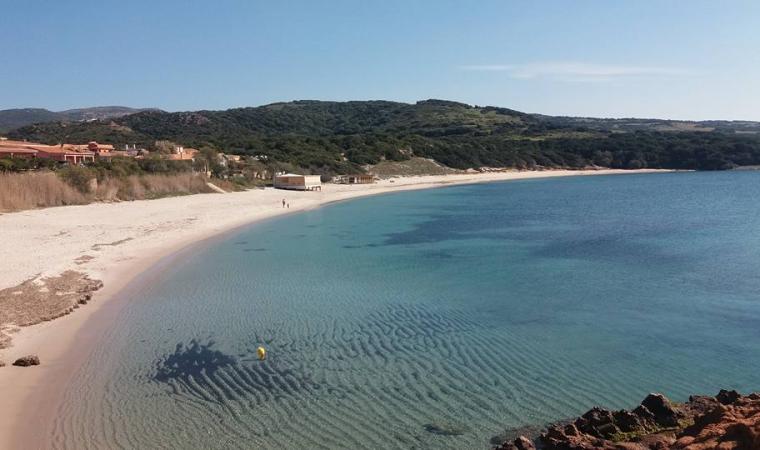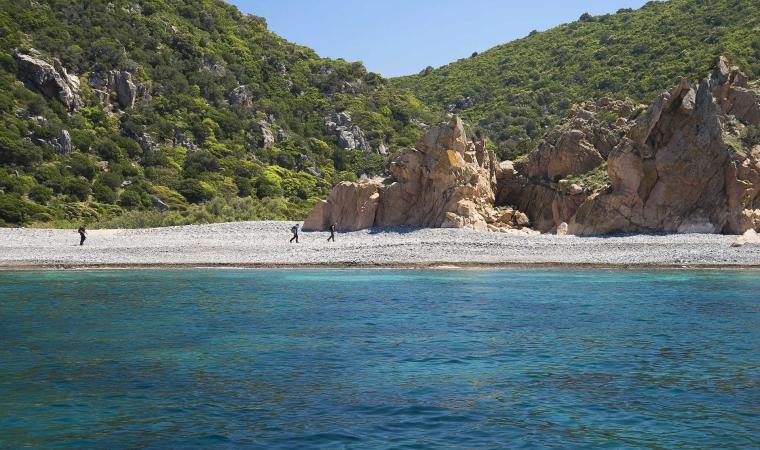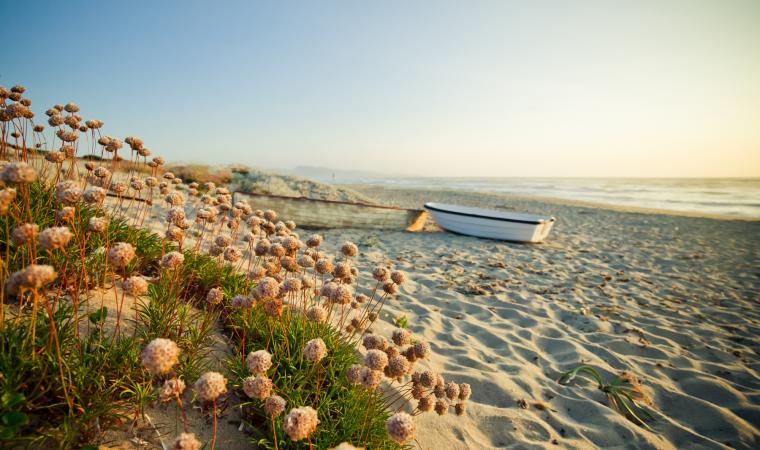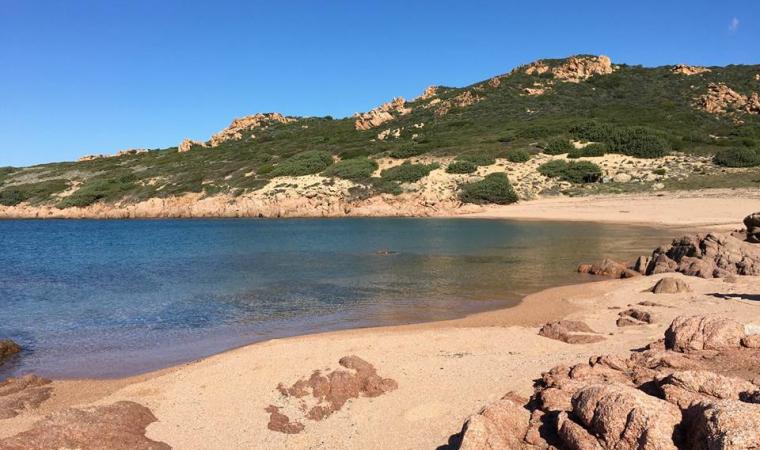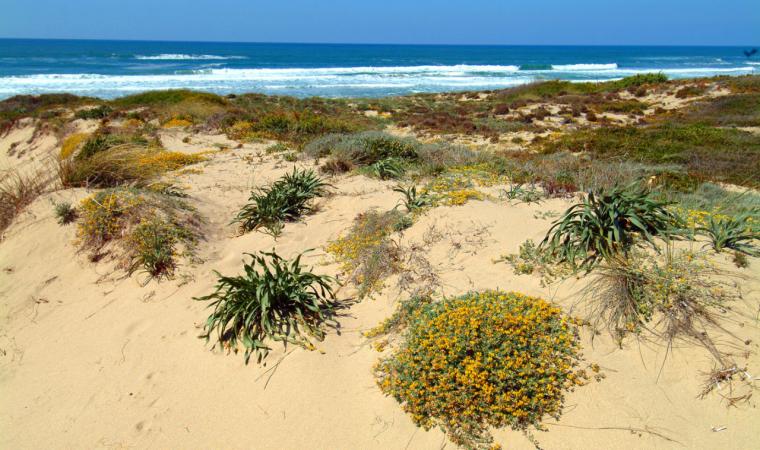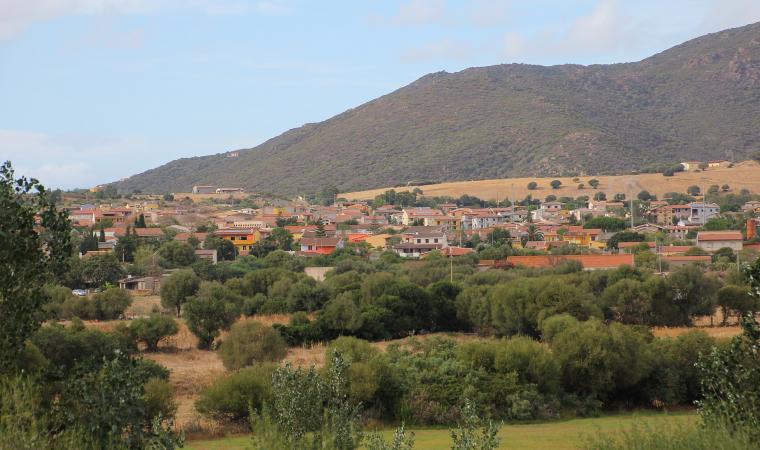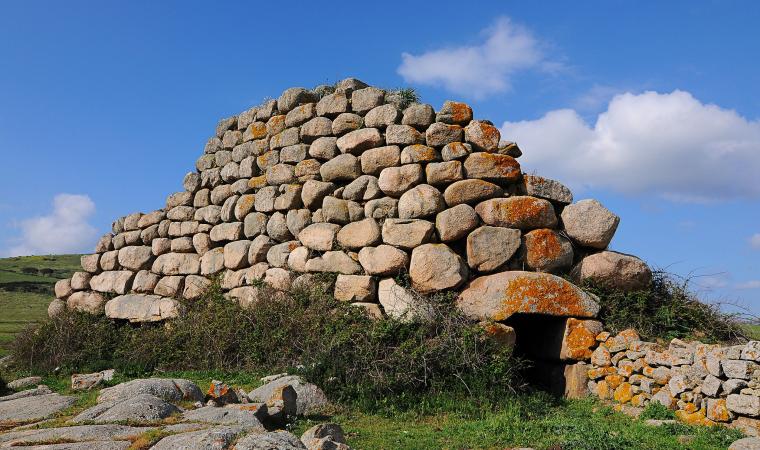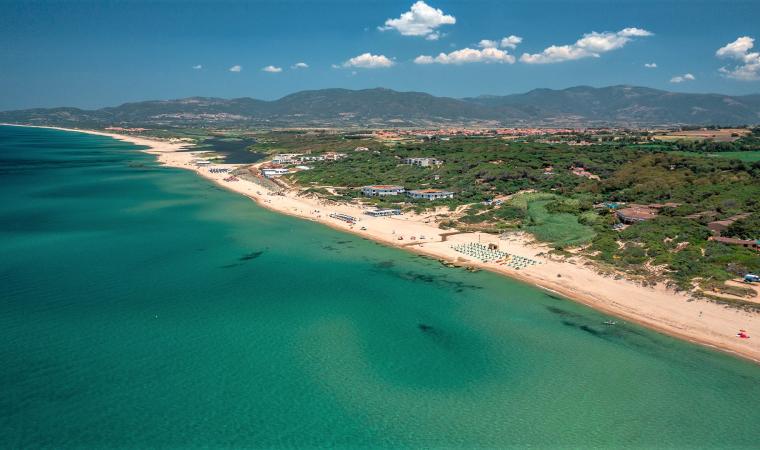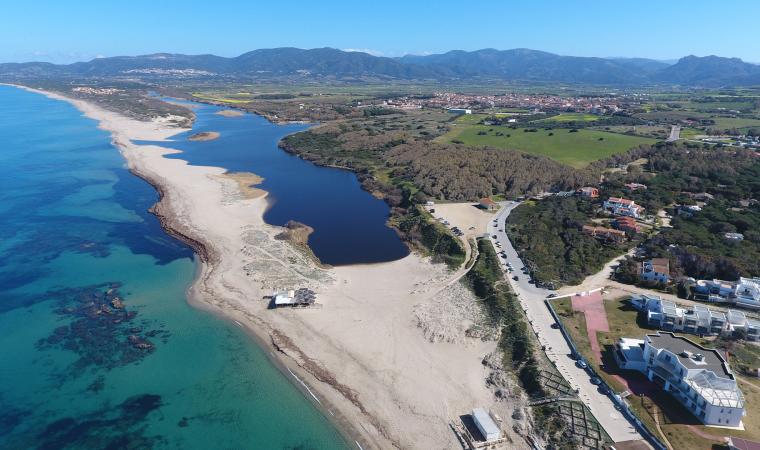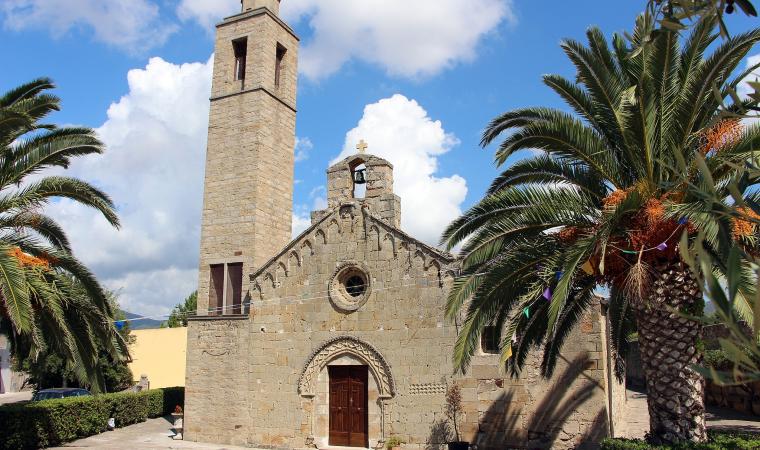A magnificent oasis of peace and relaxation, full of charm and colours, little frequented even in the summer. Li Tinnari is a solitary cove surrounded by jagged rocks and Mediterranean fragrances along the spectacular stretch of sea between Costa Paradiso and Isola Rossa, at the extreme western boundary of Gallura, on the Anglona border. The two well-known tourist villages fall within the territory of Trinità d’Agultu and Vignola, a municipality formed by the union of two localities, the first inland and the second on the coast. The beach has light, almost golden sand, together with smooth little pebbles. They are mostly grey and white, carried there by the Riu Pirastru that flows behind it and forms a pond, hence the beach’s second name of Lo Stagnone (meaning big pond). They are partly reddish, originating from the granite cliffs that surround the cove.
The appearance of the beach is that of an expanse tinged with grey, washed by a crystal-clear sea with shades of emerald green turning into light blue and deeper blue as you go further out to sea. On a predominantly rocky seabed, patches of sand appear near the shore and rocks shaped by water and wind emerge. The largest of them stands in the centre of the beach, dividing the beach into two semicircles that, when seen from above, create a ‘heart’ shape, a famous and distinctive image of Sardinia.
Entering the cove is not simple, nor immediate. There are three ways to get to it: by sea, independently or by organised tours, and there are two itineraries by land. One is short, consisting of a twenty-minute walk after parking in the parking area at the end of the diversion towards the sea (five kilometres) of provincial road SP 90, which connects Castelsardo to Santa Teresa Gallura. From the car park, you can get to the beach at the end of a one-kilometre path across the slopes of Mount Tinnari, the peak of which (214 metres) dominates the Gulf of Asinara. The second route starts at Li Cossi, an enchanting, sheltered cove of fine, very light sand washed by a multicoloured sea, surrounded by imposing pink cliffs. A seven-and-a-half-kilometre dirt path - a round trip of about two hours - divides the two ‘pearls’ of Costa Paradiso. The path is long but not demanding and it isn’t signposted, yet it’s easy to follow. Some stretches are very short ‘tastes’ of trekking, to be tackled with caution: the reward is in the wild and disarmingly beautiful landscapes, like the stretch next to the secluded pink, pebbly coves of Porto Leccio. With uphill and downhill sections, the path largely follows the coastline, between rocks and expanses of quartz, covered with junipers, mastics, cistus and helichrysum. At times, the Mediterranean scrub thickens so much that the path becomes a shady corridor.
Trinità d'Agultu, the municipal ‘capital’, stands 350 metres above sea level, dominating the coast, a granite landscape, interspersed with coves and beaches of soft, white sand. Vignola contains the two seaside villages of Costa Paradiso and Isola Rossa, so called because of the colour of the islet in front of it. Here, you’ll find the dazzling beach of Longa and, without interruption, La Marinedda, with its light, white sand, washed by the light green crystal-clear waters. It is a destination for windsurfing enthusiasts. Its spectacular dunes are closed to the south by Punta Li Canneddi, where Cala Canneddi, another stretch of fine, light sand opens up. Nearby, there are other breathtaking coves, like Cala Rossa, set in a magnificent natural environment, and the solitary Li Feruli, with its cream-coloured sand. Further south, you come to the coast of Badesi: among the various coastal treasures, you’ll find Li Mindi and Baia delle Mimose.

